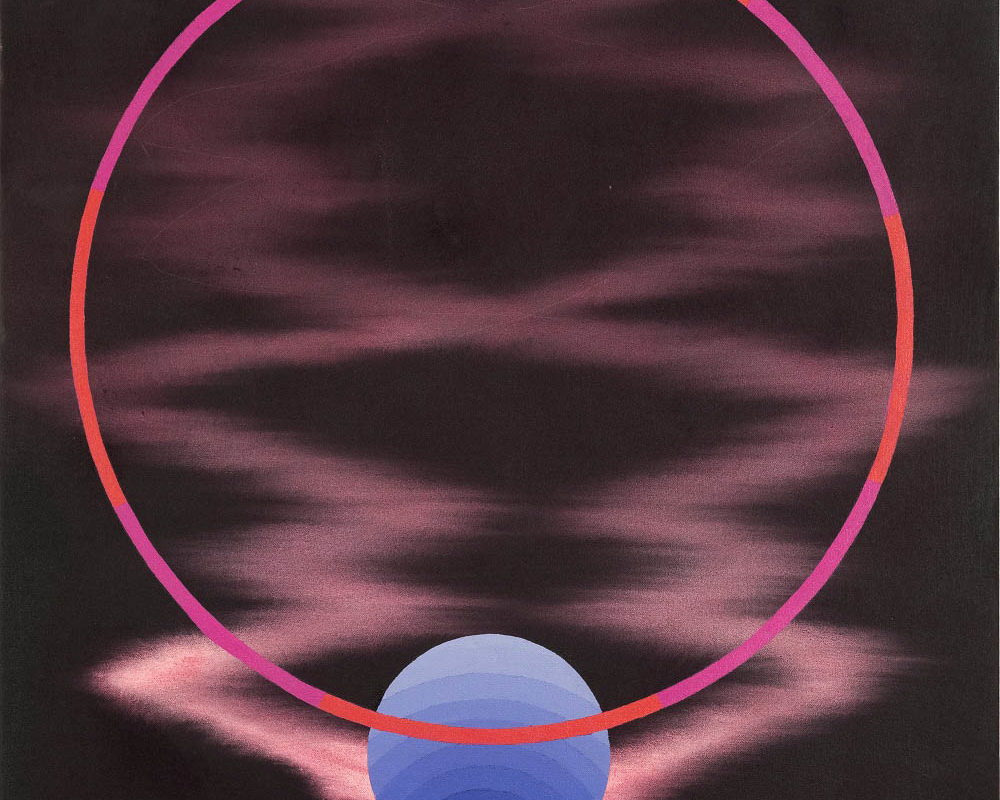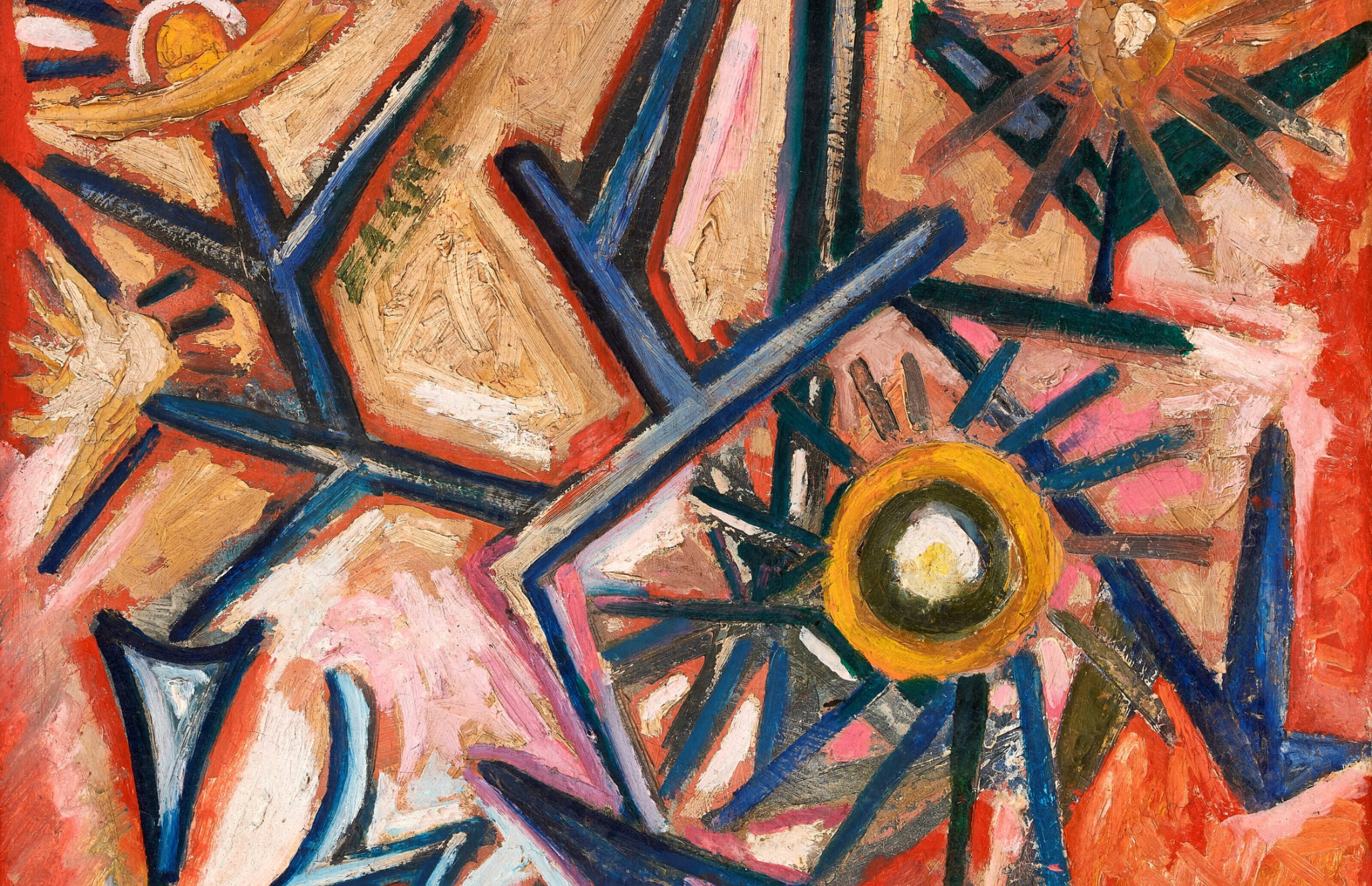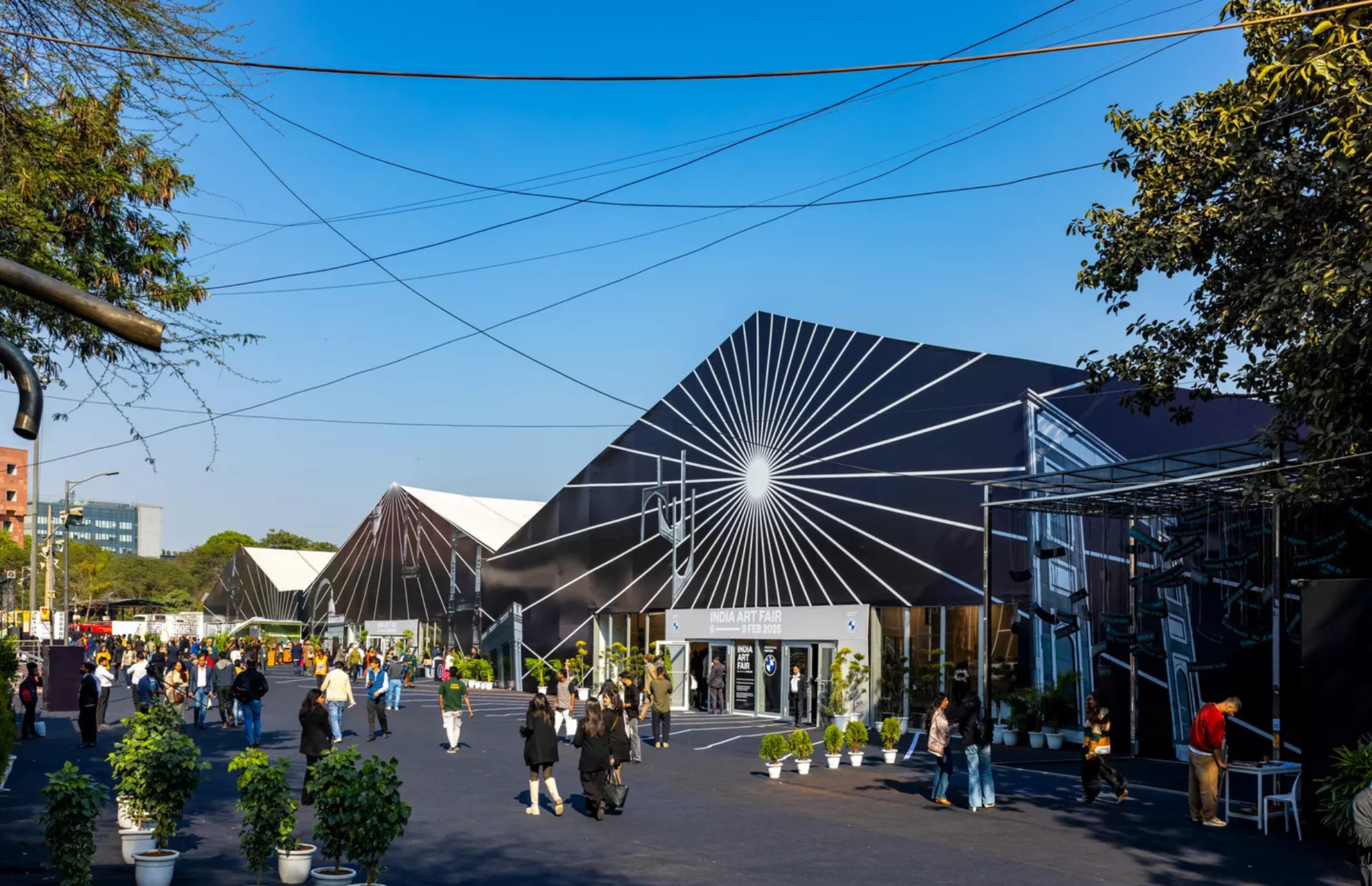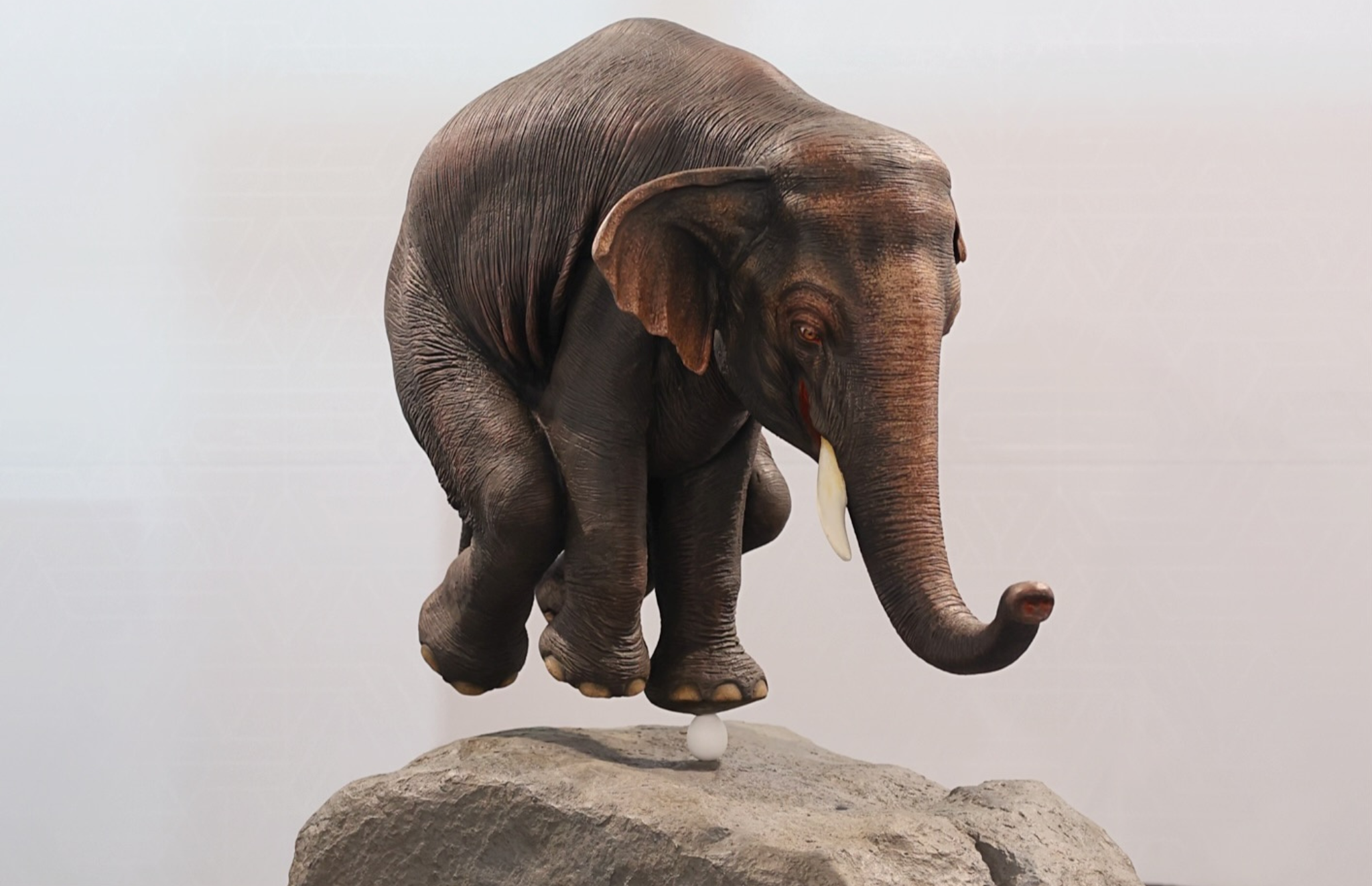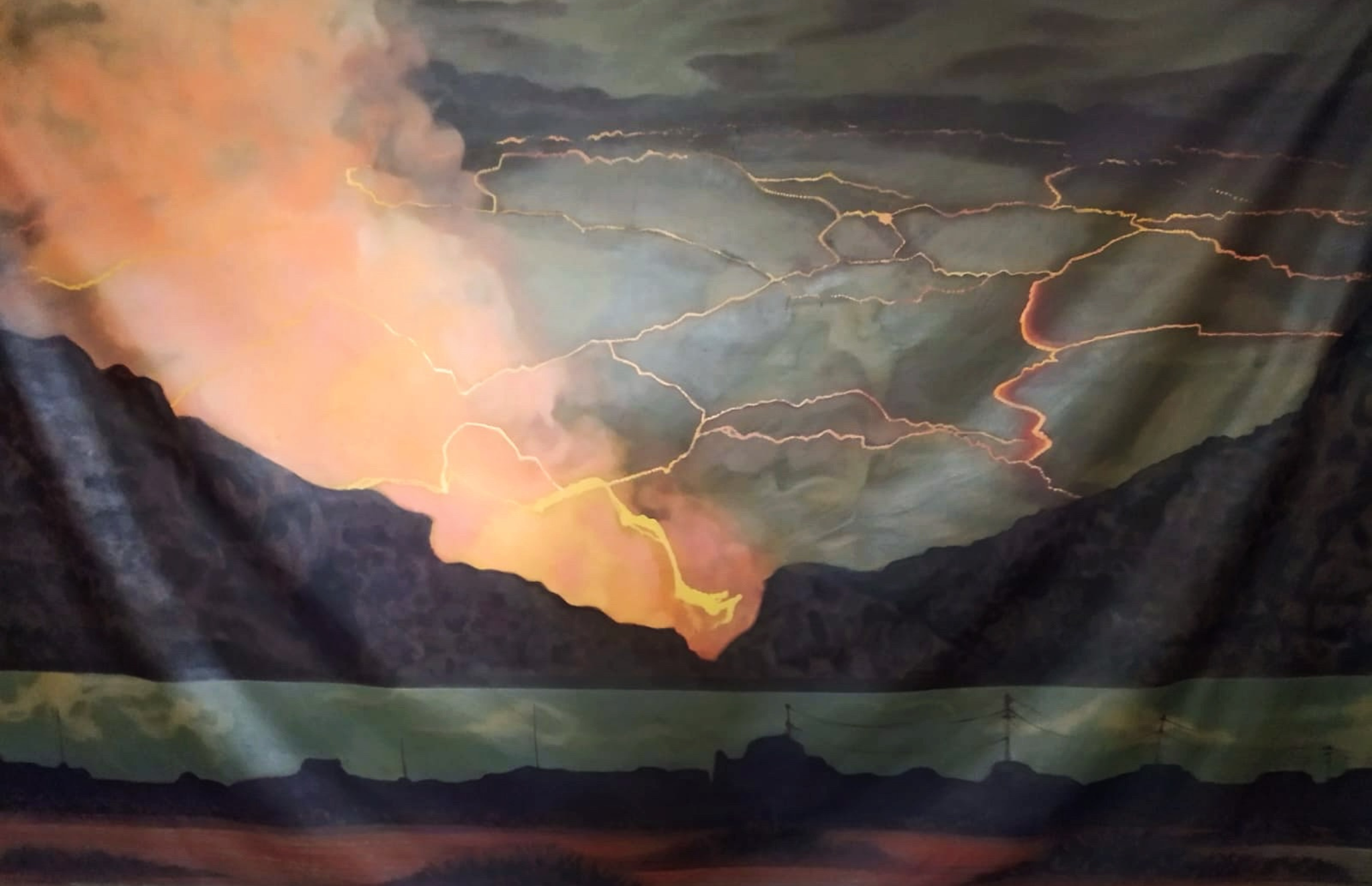RETHINKING ART AMIDST ISOLATION
When the world started shutting down due to the onset of the pandemic, the arts and entertainment sector was one of the worst affected. Art galleries were among the first places to close down. The art community adapted by transitioning from art galleries to digital galleries and adopting other virtual tools of engagement. The social distancing protocol made all interactions of the art industry to shift online. The heartening fact is that although Covid may have changed the way people access, buy and sell art, yet their love for art remains unchanged. Now that galleries are open for physical viewing, things have begun to look up yet there is scepticism whether things would revert to normal. A fear also seems to surround physical visits to galleries and people of the art community seem to have become comfortable with the home-based art engagement through digital platforms.
In fluid times such as these, digital exhibition platforms like In Touch which were conceived during Covid and grew organically are of great value and relevance to the art community. It was currently hosting its seventh edition, wherein 12 galleries partnered together. Featured here are the displays of PHOTOINK, GALLERYSKE, Nature Morte and Jhaveri Contemporary.
The diverse works of art showcased by galleries in this unique format addressed a range of themes that were expressed by artists through various mediums.
PHOTOINK
PHOTOINK at New Delhi, had put on display internationally acclaimed photographer and photojournalist Pablo Bartholomew’s monochromes that he captured in his late teens into his twenties. These exhibit titled Outside In: A Tale of 3 Cities. These black & white photographs exhumed from an archive of 30000+ negatives were previously presented in three separate exhibitions.

These unabashed black and white frames were a photographic journey into Pablo’s own archive, speaking of which he said, “Outside In: A Tale of 3 Cities comprises my inner world of friends and family across Delhi, Bombay, and Calcutta. Spanning the 1970s and 1980s, it also extends a gaze on the outer world; my associations with the cities and their people, known and unknown.” He reminisces about escaping ‘bureaucratic Delhi’ leaving behind his troubled teenage life and moving to Bombay where he found acceptance. The city gave him friendship, food, shelter, and the chance to be discovered and become someone.
On the other hand Calcutta connected him to his cultural self and to his extended family ties and bonds thus filling a void, a gap of history about the origins of his maternal side.
His lens has captured the heady 70s and 80s, an era that brought western music, disco, a devil may care attitude, a heady nonchalance and the use of recreational drugs.
Through his unique gaze we revisit the milieu of young free thinking middle class Indians in their 20s who were influenced by Western culture and the hippie movement. In the backdrop is a politically tumultuous environment brought on by the declaration of Emergency and the suspension of civil rights in the country. His cast of youngsters completely oblivious of their surroundings, puffing on cigarettes and marijuana, wearing bell bottoms, relaxing with friends and dancing with gay abandon were captured in this arresting display.


Pablo Bartholomew, Veena in my kitchen at the Jangpura house,1976 (left) and Boys hangout, Tangra, C. 1978 (right), photograph, PHOTOINK, In Touch Edition 7
Light is imperative to the mood, charm and imagery of a shot. These pictures were shot in natural light, under dim light bulbs in houses or in dusky exteriors. These characters, nostalgic and brooding encapsulated in an interplay of shadows and dull lighting linger on.
GALLERYSKE
GALLERYSKE, which has locations in New Delhi and Bangalore, showcased works by Sunil Padwal in a digital display titled, The Black Flamingo and other stories. The series consists mostly of delicate drawings using an isograph pen on paper. These works which were on display have used monochrome, subdued and limited colours.

Padwal in a note accompanying these compositions on display has written-
“There is a flamingo point in Sewari, Mumbai.The pink colour of flamingos comes from beta carotene, a red-orange pigment that’s found in food flamingos eat in their wetland environment. When they migrate to Mumbai, I don’t see them as pink.”
He grew up in the southern part of the city and his artistic practice is heavily influenced by city life, its chaos and the rapid changes in its landscape. He tends to document things that one would generally look past and his works draw inspiration from mundane aspects of everyday life and centre around themes of urban angst, alienation, changing cityscapes, pollution, humans and animals trapped in concrete jungles and many other challenges of modern urban living.
Padwal who served in diverse professional stints as a graphic designer, illustrator amalgamated all this into his art practice when he took up art full-time.Many of his works on display like The Undeciphered Letters 2021 series, Pressed memories and notes from a drawing book series 2021 and The Black flamingo and other stories 2021 were mostly line drawings done by isograph pen on paper. Some of them also employed found objects. They made bold, emphatic and sombre statements.

As usual Padwal left the interpretation of these works open to the viewer: “My drawings are fictional but the source of each drawing is rooted in things we see every day. All our memories and personal experiences add layers to our vision. There are structures we create in our minds, one’s attempt is to keep improvising within these structures, like in Indian classical music. The viewer’s engagement and imagination add their own dimensions to these semi-fictional stories.” he said.
Nature Morte
For In Touch Edition 7, Nature Morte presented the work of two artists, Olivia Fraser and Stephen Mueller, who have been profoundly influenced by the visual arts, music, and philosophy of India.
This digital display titled A New Context was a coming together of some of the best works and artistic synergies of two renowned artists.
Both Olivia Fraser and Stephen Mueller have studied and absorbed the aesthetics and techniques of Indian art, fusing them with the traditions of abstraction that have been developed in Western art since the beginning of the 20th Century, to create bodies of work that synthesise these diversities into artful and meditative experiences.

Olivia Fraser, creates vibrant yet meditative works on paper inspired by the traditions of Indian miniature painting. Fraser who has called India home since 1989, was a travelling artist before she chose to apprentice under miniature and pichwai artists from Jaipur.
She was impressed by the gem-like colours, the intricate patterning, the minute detailing and the extraordinary burnished, flat surfaces, She says that she was also attracted to the confidence of the iconography, the symbolism, the meanings behind the use of colour, shape and infinitely fine line.
Lotus, bees, and eyes as recurrent motifs in her works as are yantras and mandalas. These motifs appear very often in ancient and modern poetry and also present in the iconography of Buddhist and Hindu art. Fraser connects her use of these motifs to her practice of yoga and meditation and often makes references to the Gheranda Samhita, an early 18th century treatise on yoga, composed in Sanskrit.
She uses layers of handmade wasli paper, and pigments made from malachite and semi-precious stones like lapiz lazuli, mixing them with gum-arabic and water. In many of her compositions, she uses gold leaf.
Her work Blue Lotus is a series of nine studies on the lotus. The blue lotus is surrounded by other lighter lotuses. By using repetition she makes a meditative and contemporary statement. Metamorphosis is a five panelled work using the lotus and bee motif. Other works on display are Red Himalaya and Chakra.

Stephen Mueller (1947-2011) was an artist, writer and educator who lived and worked in New York. Mueller’s vivid light filled works combine the abstract processes of the colour field school with a lively assortment of patterns and motifs drawn from spiritualism, tantric Buddhism, Pahari and Persian miniatures, Mexican ceramics and cartoons.
By the early 1990s his works had begun to accommodate multiple modes of abstraction into a single canvas, charged with intense colours, steeped in Eastern philosophy and conveyed a style which seemed somewhat influenced by Warhol and defined him as an iconoclast in the New York art scene of the 1990s and early 2000s. He continued to explore this style until his death in 2011 and the paintings in this exhibit were indicative of Mueller’s mature work.
His vividly hued works employ polychromatic patterns and geometry, with circular and elliptical shapes suspended in space or on vaporous backgrounds. He contrasted harmonies with discords and juxtaposed symmetry with ambiguity in these works.
All of his works on display were acrylic on canvas. Some of these works were Thumri 1, Ideation, Omid, Mneme and Presenting. Each of these vibrantly coloured works on vaporous backgrounds are statements of a vividly hued yet serene mysticism.


Stephen Muller, Thumri (left) and Ideation (right), Acrylic on canvas, 2006, Nature Morte, In Touch Edition 7
Through a skillful cross-cultural approach, both Stephen Mueller and Olivia Fraser, explore the visual language of traditional Indian paintings, using age old techniques and iconography rooted in the country’s spiritual, artistic and cultural heritage that can breach borders and brilliantly synthesise east and west.
Jhaveri Contemporary
In this edition, Manisha Parekh’s minimal and skillfully executed works in watercolour and ink on paper were presented by Jhaveri Contemporary, Mumbai in a display titled Wings. Completed at the end of 2021, these works began with the observation of petals falling off a branch from a window in her studio. Watching this mundane activity gave the artist inspiration for this series.
As art critic Zeenat Nagree says about the series on display “Although they were all made in a state of enforced stillness, these works prompt contemplation of flight — how the mind can soar out of its given limits and find itself elsewhere. Alongside place, Wings brings into focus an altered experience of time. The suspension of the present allows opportunities to relive fragments of memories from the past, and creates an urgency to imagine alternate futures. For most, these exercises of reflection have moved along paths of incertitude, and continue to do so, as hope is contained within fog and blur.”
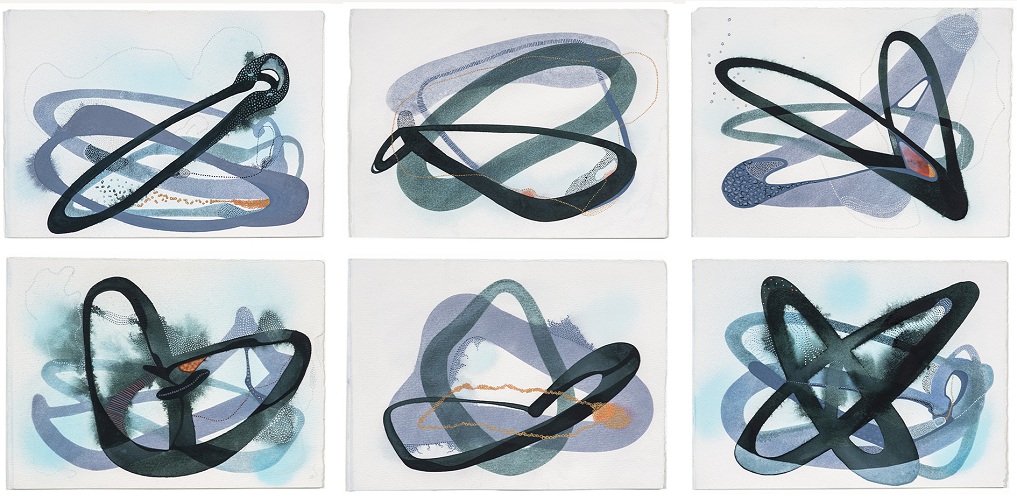
Manisha is one of the few artists in India who continues to explore abstract language. Her works are influenced by the artistic practice of Jeram Patel, Nasreen Mohammedi and Gaitonde.
Text by Prachi Goyal
Images Courtesy: PHOTOINK, GALLERY SKE, Nature Morte and Jhaveri Contemporary
Find more about the Artists and Artworks:
https://www.artintouch.in/
https://www.photoink.net/
http://www.galleryske.com/IntouchEd5/index.html
https://naturemorte.com/
https://jhavericontemporary.com/

